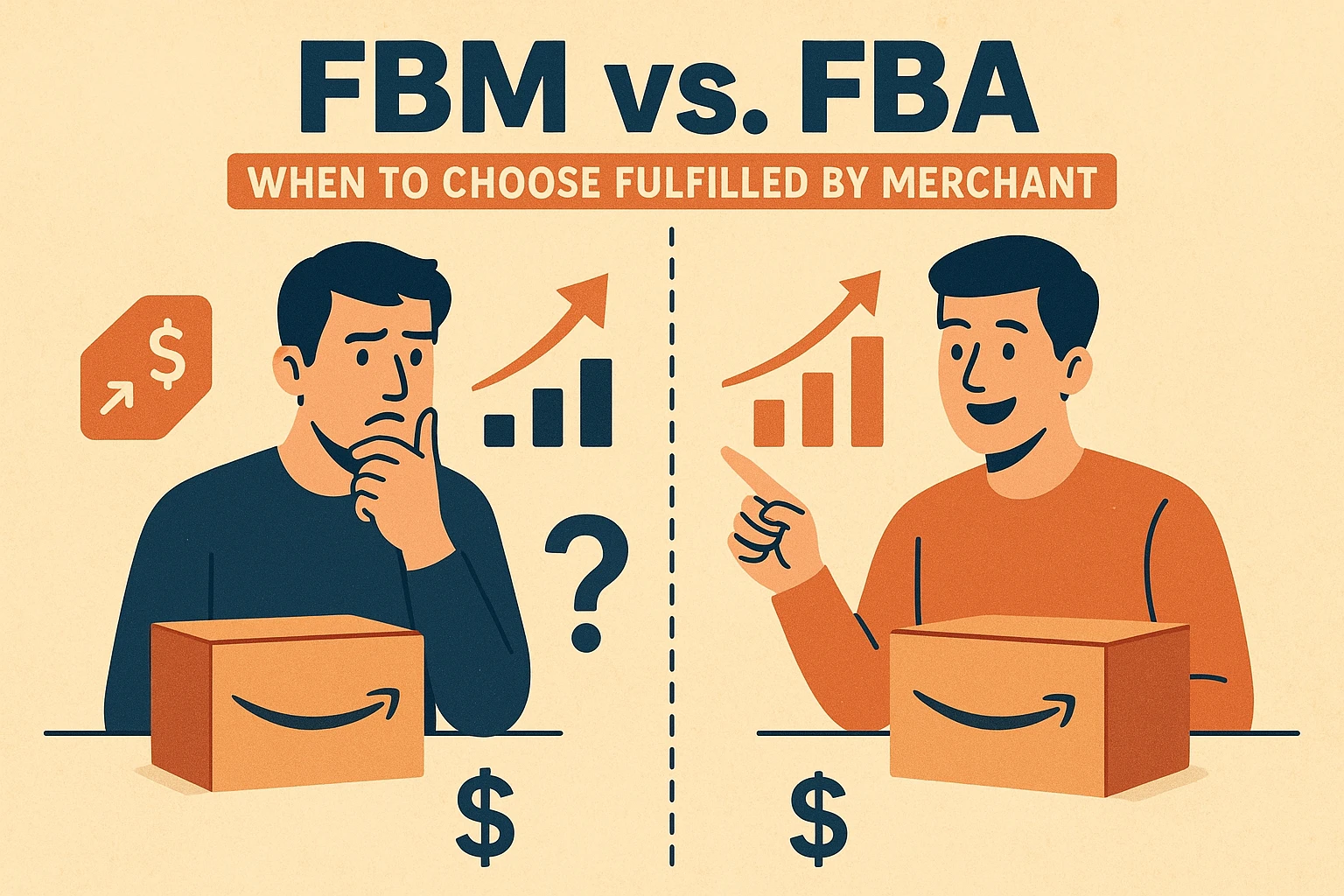Address
304 North Cardinal St.
Dorchester Center, MA 02124
Work Hours
Monday to Friday: 7AM - 7PM
Weekend: 10AM - 5PM

For U.S.-based Amazon sellers and eCommerce brands, choosing between Fulfilled by Amazon (FBA) and Fulfilled by Merchant (FBM) can feel like a make-or-break decision.
While FBA offers Prime eligibility, convenience, and automated logistics, its rising fees and rigid systems can shrink margins—especially for sellers dealing with heavy, customized, or low-volume products.
By contrast, FBM—where sellers manage their own storage, packing, and shipping—offers flexibility and cost control that FBA simply can’t match. Here’s how to decide when FBM is the smarter, more profitable choice in 2025.
FBM gives sellers full control over fulfillment. The three biggest benefits are:
For niche brands or regional sellers, these advantages often outweigh FBA’s convenience—especially when paired with a strategic logistics setup.
Amazon’s FBA fees are heavily weight-based. For large items like furniture, gym equipment, or appliances, those costs can eat your profits fast.
A 150-pound treadmill, for example, might face $100+ in FBA fees on a $500 sale—leaving little room for profit.
FBM sellers can:
🪑 Case Study: A U.S. furniture brand switched to FBM for its oversized sofas. By using a Texas-based 3PL, fulfillment costs dropped 40%, and profit margins increased from 15% to 25%.
FBA’s standardized processes don’t accommodate personalized, made-to-order, or fragile items—like engraved jewelry, custom apparel, or artisanal goods.
These products require special packaging, inspection, or final assembly, which FBA simply doesn’t support.
FBM gives sellers freedom to:
💍 Example: A jewelry brand uses FBM to add handwritten thank-you cards and branded packaging for engraved rings, leading to higher reviews and repeat purchases.
Amazon’s monthly storage fees—and especially Q4 peak rates—can devastate margins for slow-moving SKUs.
For example, a $200 specialty part selling only 5 units per month might still rack up $30 in storage fees, cutting profits by 15%.
FBM uses a pay-as-you-ship model: you only incur costs when products sell.
This makes FBM ideal for:
📦 Pro Tip: Use FBM for SKUs selling fewer than 10 units/month, and track performance through tools like InventoryLab or SoStocked to avoid overstocking.
FBA’s centralized warehouses often increase delivery times and shipping costs to states like Alaska, Hawaii, or Puerto Rico.
Sellers operating in regional markets can use local couriers or 3PL partners to ship faster and cheaper.
🏄♂️ Example: A Hawaii-based surfboard seller switched to FBM and used regional couriers for 2-day delivery—cutting logistics costs by 30% and improving customer satisfaction.
🧭 Bonus Tip:
FBM allows you to fulfill across multiple channels (e.g., Amazon + Shopify + Etsy) using one centralized inventory system—something FBA doesn’t allow.
FBA restricts warehouse space and imposes inventory limits—especially during Q4 or Prime events. You might find yourself unable to send enough stock when demand spikes.
FBM gives sellers full flexibility to:
📈 Data Insight: Sellers using FBM report 20% higher inventory turnover thanks to faster restocking and better forecasting.
| Factor | FBA | FBM |
|---|---|---|
| Product Type | Lightweight, high-turnover | Heavy, custom, or niche |
| Sales Volume | High (50+ units/month) | Low (5–10 units/month) |
| Geographic Reach | Nationwide (Prime eligible) | Regional or flexible |
| Control Level | Limited | Full control |
| Storage & Fees | Fixed + seasonal surcharges | Pay-as-you-go |
🧩 Decision Rule:
If your products fit 2 or more FBM scenarios (e.g., heavy + low volume), FBM is likely the more profitable model.
Q1: Does FBM affect my Buy Box eligibility?
Not necessarily. FBM sellers can win the Buy Box by maintaining competitive prices, fast shipping, and strong seller ratings.
Q2: How do I manage returns with FBM?
You’ll handle returns yourself, but you can use Amazon’s Return Processing Portal for automation. Set clear return policies (e.g., 30-day returns) to maintain customer trust.
Q3: Can I switch between FBA and FBM for the same SKU?
Yes. You can use Amazon’s Inventory Placement Service to split stock or list the same product under both fulfillment options.
FBM isn’t a one-size-fits-all solution—but for U.S. sellers handling heavy, customized, or slow-moving items, it offers superior control, flexibility, and profit potential.
By aligning your fulfillment strategy with product type, sales velocity, and regional logistics, you can lower costs, improve margins, and scale more sustainably on Amazon.
Next Steps:
📦 Smart fulfillment = Sustainable growth.